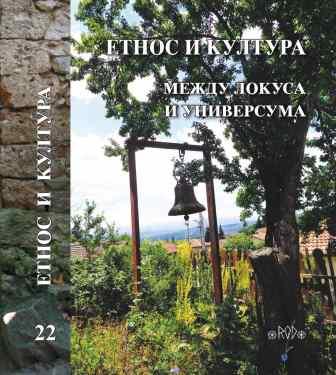НАСЛЕДСТВО И ПАМЕТ. СЪВРЕМЕННИ МЕМОРИАЛНИ ПРАКТИКИ В ГЕРМАНИЯ ЧАСТ 3
HERITAGE AND MEMORY. CONTEMPORARY MEMORIAL PRACTICES IN GERMANY Part 3
Author(s): Dessislava TiholovaSubject(s): History, Anthropology, Social Sciences, Customs / Folklore, Sociology, Oral history, Political history, Social history, Recent History (1900 till today), Cultural Anthropology / Ethnology, Culture and social structure , Applied Sociology, Criminology, WW II and following years (1940 - 1949), Post-War period (1950 - 1989), Transformation Period (1990 - 2010), Present Times (2010 - today)
Published by: Асоциация за антропология, етнология и фолклористика ОНГЬЛ
Keywords: memory; heritage; monument; memorial; tombstone; guilt; heroes; self-sacrifice; debt;
Summary/Abstract: The current text continues the observations on the contemporary memorial practices, and more specifically – on the so-called “Denkmalarbeit” process. The idea of the “Contemporary Memorial Practices in Germany” series is based on the hypothesis for immanently inherent in German society guilt, represented in this particular case by means of numerous monuments of one of the oldest and highly organized communities in Germany – that of the miners. The topic of guilt, albeit indirectly, is present in the general complex of socio-cultural patterns associated with the image of miners as heroes, angels, upholders of the German economy and industry and, in this sense, saviours of society from economic dependence and ruin. Guilt regarding labour, hard work and the sudden, dramatic death forms a specific notion in the process of creating monuments – the miners carry their burden voluntarily (although their decision is predetermined by the social-economic force), sacrifice their lives – “fallen during/remain on their labour station” during “the faithful execution of their duty”, while society transforms the ordinary death into “a sacrifice” and preserve the memory for the executed public duty. The specifics of the “Denkmalarbeit” process, manifested not only through large number of monuments, but also through the search of new forms (memorial and contra-memorial) for overcoming public 210 guilt, multiplied in various aspects (Holocaust, witch and deserters’ trials) produces more and varying forms of memory, turns into a resource and a catalyst in the process of forming cultural heritage.
Journal: Годишник на Асоциация за антропология, етнология и фолклористика »Онгъл«
- Issue Year: 2023
- Issue No: 22
- Page Range: 165-210
- Page Count: 46
- Language: Bulgarian
- Content File-PDF

